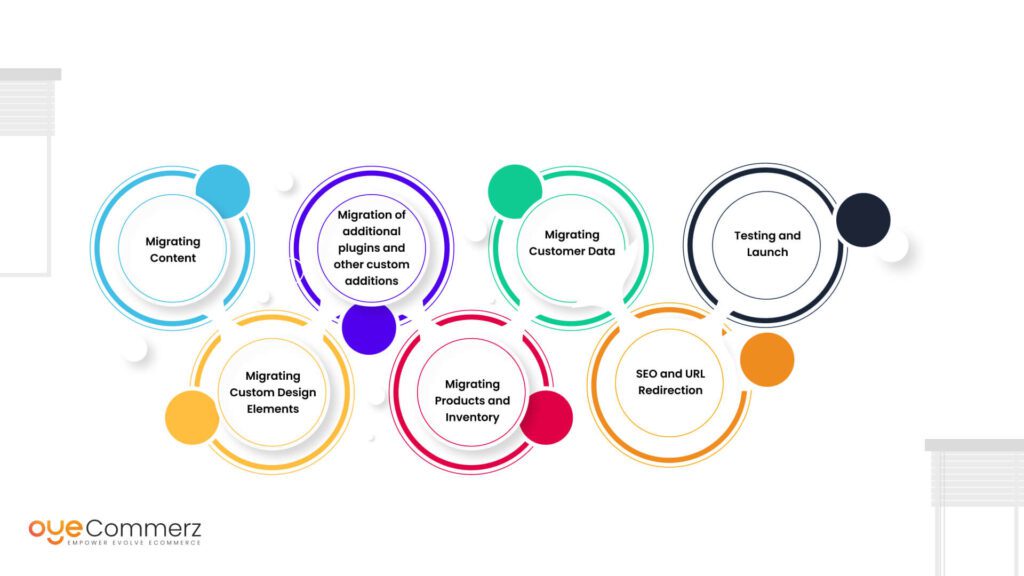Transitioning from WordPress to Shopify is an promising step toward optimizing your online store operations. As companies grow, selecting a platform that supports growth potential, user experience, and flexibility becomes crucial. Shopify is widely recognized as a favorite for e-commerce professionals, offering superior flexibility, data protection, and ease of use. In this guide, we’ll explore the transformative impact of this migration, highlight the advantages, and provide practical tips to ensure a smooth transition.
1. Why Switch from WordPress to Shopify?
WordPress, paired with WooCommerce, continues to support countless online stores. Nevertheless, as businesses scale, challenges like reliance on plugins, data risks, and complex setups can hinder growth. Shopify, specifically created for e-commerce, addresses these concerns with an all-in-one, intuitive solution. Statistics back this shift—Shopify hosts over 4.4 million websites globally, with a reported 10% boost to sales conversion rates for many businesses post-switch.
2. Shopify's Advantages for Thriving Online Stores
Shopify’s powerful platform caters for expanding brands. Its standout features include:
- Seamless Customization: Shopify offers over 80 expertly crafted themes.
- Integrated Tools: Features like Shopify Payments and integrated SEO save time and effort.
- Global Reach: Multi-currency support and regional customization empower brands to expand internationally.
Additionally, Shopify delivers an uptime rate of 99.98%, ensuring your website is always operational.
3. Preparing for WordPress to Shopify Migration
Prior to starting the migration process, evaluate your existing setup. Analyze inventory details, customer details, and SEO performance. Tools like Shopify’s Migration Kit or third-party solutions help ease the transition. Create a comprehensive plan, making sure all resources—item details, media files, and blog content—are ready for seamless import.
4. Data Migration: A Critical Step
Transferring your data is a cornerstone of a successful platform switch. When migrating from WP to Shopify, focus on:
- Inventory Details: SKU, descriptions, and categories.
- Customer Data: Emails, order history, and custom fields.
- SEO Optimization: Retain meta tags, URLs, and forwarding paths to avoid SEO losses.
Use tools such as LitExtension to streamline data transfer while minimizing errors.
5. Customizing Your Shopify Store
Post-migration, personalizing your Shopify store helps Data migration to Shopify it reflects your business identity. Take advantage of Shopify’s drag-and-drop editor to design pages effortlessly. Shopify's themes are mobile-responsive, providing a seamless user experience across devices—a key point, since 74% of e-commerce traffic is generated by mobile users.
6. How to Protect Your SEO Rankings When Switching Platforms
SEO is vital for preserving your online presence during migration. Shopify is highly optimized for search engines with organized link formatting, built-in optimization tools, and seamless blog integration. Ensure:
- Set Shopify migration case study up URL forwarding for existing links.
- Enhance updated content with targeted phrases.
- Use Shopify's apps Plug in SEO to monitor performance after the switch.
7. Essential Tests After Migrating to Shopify
Once the migration is complete, run detailed checks.
Review: - Website speed (Shopify boasts faster speeds in contrast with WP).
- Payment integration reliability and transaction flow.
- Adaptability across devices.
Testing guarantees your store provides a smooth shopping experience from the start.
8. Case Study of a Successful Migration
An example of effective platform switching is Gymshark, a sportswear company that moved to Shopify. After the switch, the company experienced a 60% boost in mobile sales and significantly lowered site downtime. This highlights the potential of Shopify in enhancing online business success.
9. Overcoming Common Migration Issues
Migration comes with challenges, such as data integrity and reconfiguring custom functionalities. However, Shopify’s robust support and external professionals make overcoming these hurdles manageable. Collaborating with qualified Shopify developers helps guarantee a trouble-free transition.
10. Making the Switch: The First Step Toward Success
Migrating from WP to Shopify marks a forward-thinking decision to online retail. By focusing on growth, simplifying management, and improving buyer satisfaction, Shopify enables companies to thrive in competitive markets.
Final Thoughts
Switching from WP to Shopify is a strategic move that can significantly boost your online business performance. With a robust migration plan, the right tools, and professional guidance, you can achieve new growth opportunities.
Excited to start the journey? Reach out today to learn how our Shopify migration services can transform your online store. Contact us now, or ask yourself: Is it time to seize Shopify’s advantages for your store?
